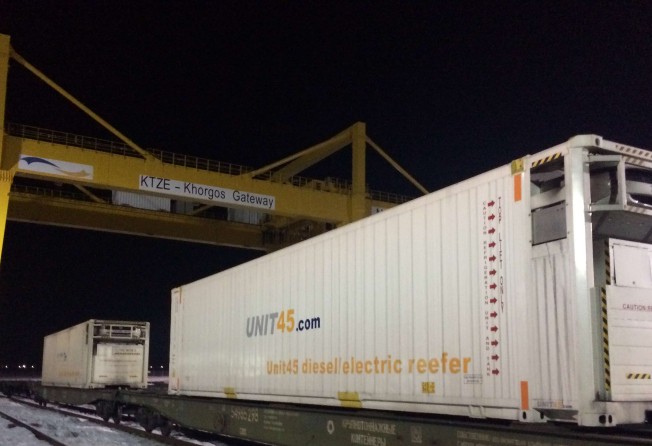Belt and road’s new ports stimulate the development of innovative transport technologies and faster logistics
Initiative’s new ports, faster trains and smart containers redefine intercontinental logistics

The One Belt, One Road initiative was inspired by the ancient Silk Road, but it is also futuristic. Its rail lines are among the most advanced in the world, and its land and seaports are some of the most sophisticated.
The belt and road is also stimulating the development and testing of innovative transport technologies that may set new logistical standards.
“Asia is becoming a laboratory of sorts for transportation ideas,” says Jonathan Hillman of the Center for Strategic International Studies in Washington DC. “Just as the compass and the domesticated camel facilitated greater mobility in ancient times, all these innovations have the potential to reshape today’s economic landscape.”
The Khorgos Gateway dry port is far off on Kazakhstan’s border with China, a tick from the farthest point on the planet from the sea – but it is among the most technologically advanced in the world.
Part of a special economic zone that is modelled on the Jebel Ali Free Zone in Dubai, the port transships trains between China and Europe. It is also equipped with the industry leading Navis N4 terminal operating system and a state-of-the-art RFID system that streamlines the exchange of containers between trains and trucks. Khorgos Gateway can process an entire train in 47 minutes, which is faster than more established dry ports in Europe.
“If you come to a place where no practice existed before, you try to outperform all practices,” says Karl Gheysen, the dry port’s first CEO. “That’s what we did.”
The vanguard of the Silk Road Economic Belt is the emerging network of trans-Eurasian direct cargo trains that now criss-cross the 9,000km transcontinental route in under two weeks. However, the future of this network is high-speed.
Various plans to build high-speed rail lines in Russia, Southeast Asia, and Europe are in the works. Among the most ambitious is one that would connect Moscow with Beijing, which would allow passengers and cargo to traverse the 7,769km divide in just 33 hours.
There is also significant talk along the belt and road of Hyperloop systems being developed to transport passengers and cargo through an enclosed tube at over 1,000km/h – faster than the cruising speed of a Boeing 747. This groundbreaking form of transport is not only extremely fast, but also relatively cheap, safe, energy-efficient, environmentally friendly, and impervious to most weather conditions.
Companies such as Hyperloop One and Russia’s Caspian Venture Capital are engaged in a feasibility study to build a Hyperloop to connect China’s Hunchun logistics zone with the Russian port of Zarubino. If built, this Hyperloop system could transport six containers per minute and over 1.3 million TEUs per year – as much as a large seaport – and generate earnings of about US$250 million per year.
Even the shipping containers on the belt and road are high-tech. Dutch firm Unit45 has created a “smart” 45-foot reefer shipping container with 800 litre fuel tanks that can power them for up to 22 days – enough time to make the trans-Eurasian rail journey.
The containers are also fully climate controlled, GPS enabled, and are equipped with light-triggered anti-theft devices. These containers allow manufacturers of temperature-sensitive electronics or producers of perishables to ship their goods overland without worrying about weather.
The belt and road initiative is reshaping the transport landscape of Eurasia.